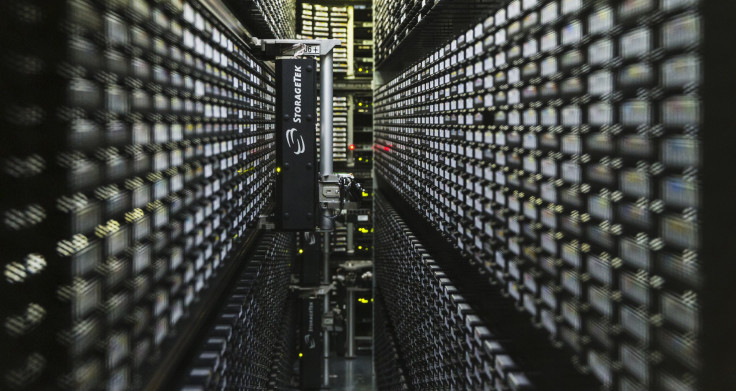World's Smallest Hard Drive Writes Data Atom-By-Atom

Dutch scientists have developed a unique solution to deal with the data storage problem. By manipulating single atoms, researchers have created the world’s smallest hard drive capable of storing 1 kilobyte of data (8000 bits) in a space under 100 nanometers across. The technology means that all the books in the world could be stored on a device the size of a postage stamp.
In a study published Monday in the journal Nature Nanotechnology, scientists from the Technical University of Delft (TU Delft) said that they have created an atomic hard drive with a storage density that is 500 times greater than current hard drive technology.
Associate Professor at TU Delft and lead researcher Sander Otte and his team found that placing chlorine atoms on a copper surface created the perfect square grid. A hole appears in the grid when an atom is missing. Using a scanning tunneling microscope, scientists were able to move atoms around one by one and even drag individual atoms toward the hole.
When a chlorine atom is on top with a hole beneath it, it’s a one, the binary digit and when it’s the other way around it’s a zero — thus creating a hard drive.
“The combination of chlorine atoms and supporting copper crystal surface that we found now, combined with the fact that we manipulate ‘holes’—just as in a sliding puzzle—makes for a much more reliable, reproducible and scalable manipulation technique that can easily be automated,” Otte said. “It is as if we have invented the atomic scale printing press.”
The chlorine atoms are surrounded by other chlorine atoms keeping them in place except near the holes. Using this technique, researchers created the largest atomic structure ever constructed by humans.
The scientists reportedly stored various texts in this atomic hard drive after figuring out a binary alphabet depending on the position of the holes. Among other texts, they stored physicist Richard Feynman’s seminal lecture, “There’s Plenty of Room at the Bottom,” and Charles Darwin’s, “On the Origin of Species.” The texts had to be stored atom by atom on the surface of the copper sheet. The work proved that writing, storing and reading data at the atomic scale was possible.
“While the memory outperforms existing media by far in terms of capacity, it still stays far behind in terms of read/write speed,” Otte said. “However, I foresee no physical boundaries that will prevent us from speeding up these processes to similar speeds that are currently seen in [hard disk drives]. It will be a technological challenge for sure, but in terms of physics it should work.”
The technique is not quite ready for large-scale implementation. It can operate only in clean vacuum conditions and at liquid nitrogen temperatures (-346°F). “The actual storage of data on an atomic scale is still some way off,” Otte said. But, he added, “through this achievement we have certainly come a big step closer.”
© Copyright IBTimes 2024. All rights reserved.












